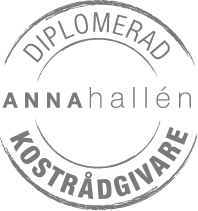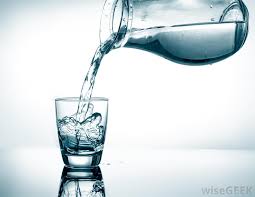Hur mycket vatten ska man dricka?
oktober 15, 2014 i Hälsa
Minst 8 glas om dagen och gärna mer. 2-3 liter minst. Eller vikt (kg) x 0,033=X antal liter du ska dricka per dag. Stämmer det? Behöver vi verkligen dricka så mycket vatten? Själv tänker jag att det är högtst individuellt. Ålder, aktivitetsnivå, klimat, vad vi äter och hälsotillstånd är några av de saker man får ta hänsyn till. Jag tror inte att vi ska gå och sippa vatten dagarna i ända, såvida vi nu verkligen inte är törstiga. Att dricka när man inte är törstig är väl lika tokigt som att äta om man inte är hungrig?
Såg det här inlägget i min feed i morse (postat av Chris Kresser) och jag tyckte det var klockrent. Håll till godo!
How Much Water Do You Really Need?
Eight ounce glasses of water, eight times per day: this has been the water drinking mantra pushed by health professionals, beverage companies, and popular media for decades. From the number of people sipping on water bottles on a constant basis, it seems like the “drink more water” message is getting through. But is this message accurate? And where did it come from?
It may surprise you to learn that there has never been any scientific evidence to support the “eight by eight” doctrine when it comes to proper hydration. The first recorded scientific endorsement of a water intake recommendation appeared as a brief footnote in 1945, when the Food and Nutrition Board of the National Academy of Sciences published its Dietary Guidelines. (1) And like many other nutrition recommendations, it appears that individual needs for water vary widely, and 64 ounces of pure water every day may actually be too much for some people. (2) So how do you determine how much water you need as an individual?
How much water do you really need?
There’s no question that adequate hydration is important, as water is a critical nutrient, but the eight by eight guidelines are a gross oversimplification. There is no universal requirement for water intake, and your needs will vary widely based on age, gender, body size, health status, and physical activity levels. Numerous environmental factors, such as high temperature and humidity levels, also influence water needs. (3) It is difficult to estimate an exact amount of water needed for an individual, so thirst should be used as a general guideline for most individuals. In other words, if you are thirsty, drink, and if you’re not thirsty, don’t force yourself to drink simply because you believe it to be a healthy practice.
Additionally, the eight cups a day recommendation typically does not account for the water content of food. Many Paleo staples are surprisingly high in water; besides just fruit and vegetables, foods like yogurt, salmon, eggs, and potatoes are about 75% water, and four ounces of broiled salmon provides about one half cup of water. (4) If your diet is full of water-rich fruits, vegetables, and animal products, you may not need as much liquid water as you think. And if you’re eating soups or broths, that volume should certainly be counted towards your daily fluid intake.
Let thirst be your guide
Thirst is a sufficient indicator for most people of hydration status. From an evolutionary perspective, thirst has done a pretty good job of enabling us to survive as a species. While many believe that thirst is an indicator that a person is already dehydrated, this claim has not been substantiated by any research. (5) Thirst actually begins when the concentration of blood, an accurate indicator of our state of hydration, has risen by around two percent; experts generally define dehydration as beginning when that concentration has risen by at least five percent. (6) So while thirst is a good indicator that a drink would help maintain good hydration, it doesn’t necessarily imply dehydration.
Exceptions to thirst guiding hydration might include athletes engaged in exceptionally strenuous activity, when dehydration is far more common and adequate rehydration is essential to athletic performance as well as good health. Drinking plain water can improve performance in endurance exercise, but there are further performance improvements when carbohydrate and electrolytes are added. (7) Sodium should be included in fluids consumed during exercise lasting more than 2 hours, and is beneficial for aiding rehydration for anyone engaged in moderate activity. (8)
People with health conditions that affect their thirst, such as diabetes or kidney disease, may need more precise estimations of fluid needs on a daily basis. Excessive thirst is a symptom of hyperglycemia, among other diseases, and not necessarily an indication of dehydration. If you find yourself having constant thirst despite drinking regularly, you may have a serious condition that needs treatment from a medical professional. Again, individual needs will vary greatly, so pay attention to your own health.
What should you be drinking?
Pure water is probably good enough for recreational athletes engaged in mild to moderate activity. Those doing intense training or those who sweat excessively, however, will need electrolytes in addition to water, and possibly even sodium tablets. Sodium is essential to avoid hyponatremia, a serious condition caused by a lack of salt in the blood, leading to water imbalance and water build-up in the brain. (9) Therefore, sodium is one of the major electrolytes that is essential to include in a rehydration beverage following strenuous exercise.
There are many great natural alternatives to commercial sports drinks for replacing electrolytes during and after strenuous exercise. Bone broth is full of minerals such as calcium and magnesium, which can help with muscle contraction and relaxation, as well as amino acids for improved muscle and joint repair, making it a great choice for athletes. Coconut water has a good mix of electrolytes and simple sugars to aid in sports performance, though extra salt may need to be added to some brands that are lower in sodium to optimize rehydration.
Take home message: Drink what you want!
The best advice I can give when it comes to water consumption is let your thirst be your guide, and adjust your fluid intake depending on your lifestyle and environment. If you are relatively sedentary, live in a cold climate, don’t sweat much, or eat water-rich foods, you probably don’t need to be drinking eight cups of water a day. There’s no evidence to support those recommendations, and forcing down excess water throughout the day is not only unnecessary, but can cause damage if done too frequently. For most people, the body is its own best guide.













Nya Kommentarer